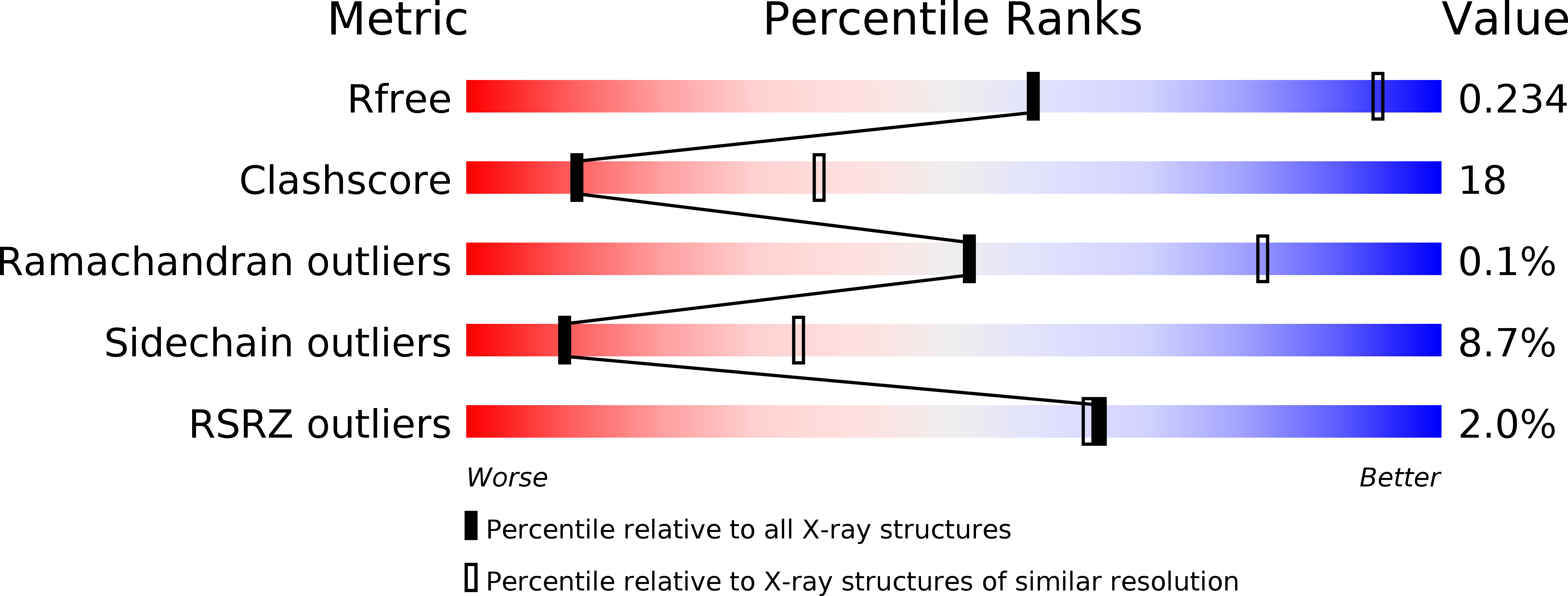Structure of Human Pofut2: Insights Into Thrombospondin Type 1 Repeat Fold and O-Fucosylation.
Chen, C.I., Keusch, J.J., Klein, D., Hess, D., Hofsteenge, J., Gut, H.(2012) EMBO J 31: 3183
- PubMed: 22588082
- DOI: https://doi.org/10.1038/emboj.2012.143
- Primary Citation of Related Structures:
4AP5, 4AP6 - PubMed Abstract:
Protein O-fucosylation is a post-translational modification found on serine/threonine residues of thrombospondin type 1 repeats (TSR). The fucose transfer is catalysed by the protein O-fucosyltransferase 2 (POFUT2) and >40 human proteins contain the TSR consensus sequence for POFUT2-dependent fucosylation. To better understand O-fucosylation on TSR, we carried out a structural and functional analysis of human POFUT2 and its TSR substrate. Crystal structures of POFUT2 reveal a variation of the classical GT-B fold and identify sugar donor and TSR acceptor binding sites. Structural findings are correlated with steady-state kinetic measurements of wild-type and mutant POFUT2 and TSR and give insight into the catalytic mechanism and substrate specificity. By using an artificial mini-TSR substrate, we show that specificity is not primarily encoded in the TSR protein sequence but rather in the unusual 3D structure of a small part of the TSR. Our findings uncover that recognition of distinct conserved 3D fold motifs can be used as a mechanism to achieve substrate specificity by enzymes modifying completely folded proteins of very wide sequence diversity and biological function.
Organizational Affiliation:
Friedrich Miescher Institute for Biomedical Research, Basel, Switzerland.

















